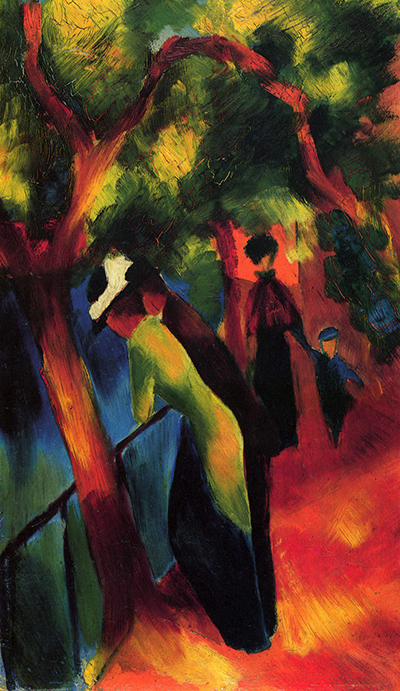This painting from August Macke is dated from 1913, just as he was approaching his peak as an artist, close to the outbreak of WWI.
Sunny Way features two smartly dressed figures leaning over a rail in their local park, with another woman wandering behind with her young child. The attire is purely middle class, creating a desirable image of the early 20th century in Germany. The nearest figure is sporting a green dress which looks both elegant but also captures your eye immediately. A tree to her left is used to frame the composition using a technique that has been around since the Renaissance, with it filling the entire left hand side of the painting. A simple line of perspective tracks along the path, with the right hand side of this reddish path cropped out. The majority of the top part of the painting is exclusively in tones of green, allowing the trees' foliage to dominate. See also Walking in the Park and Woman in Park.
Nature and humanity went together in many of this artist's paintings - he loved to place figurative work within a setting of a park or forest. He also loved to capture leisure time more generally, which was probably inspired by his time studying the work of the great French Impressionists. He would mix up his compositions, sometimes going for a similar figure, sometimes groups, and occasionally he would also feature men and women together. Macke was interested in the changing tones of society and commented on it through his expressive work. His colour schemes were also typically bright and positive, despite the problems being experienced within Europe at this time.
August Macke was a significant artist who helped to draw attention to the achievements of the German Expressionist movement, and some of the different variations that existed within that. His journeys abroad also brought new influences into the group and encouraged others to look beyond their local environment in order to find new ideas and inspiration. He was certainly not the only innovative member of the group, however, and plenty of interest remains in related colleagues such as Kandinsky, Klee and Kirchner. In all, this was possibly the most prominent period in German art, though they did have individual artists of note in most other major art movements.




